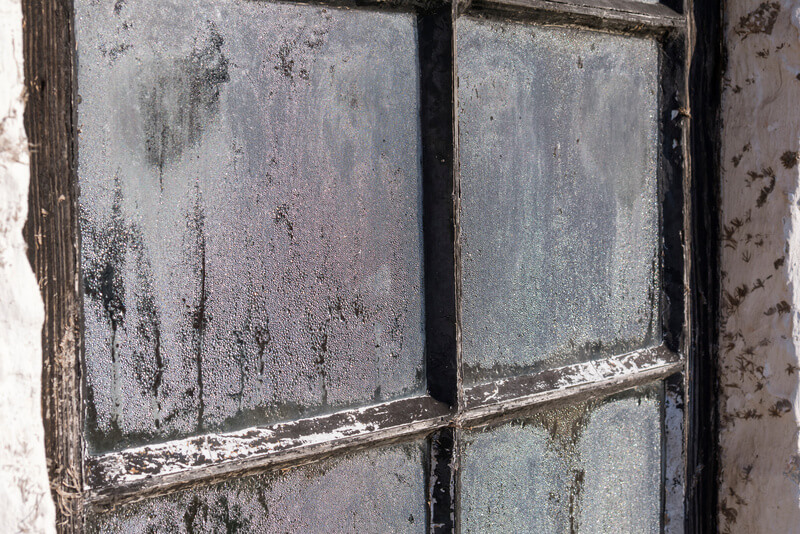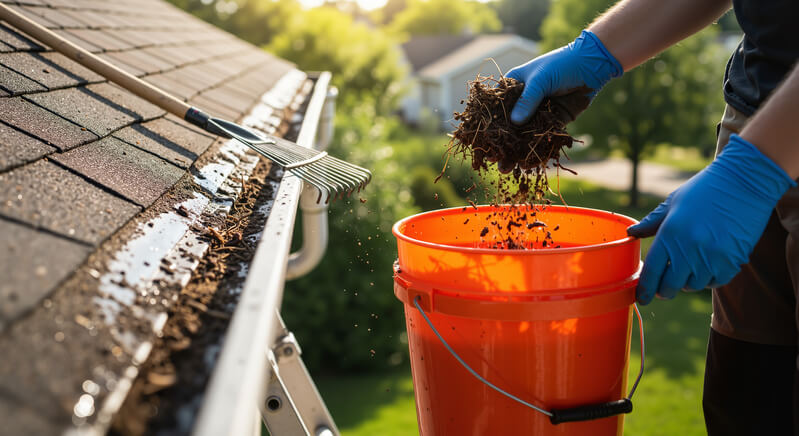Most people don’t pay any real attention to their roof until they notice a leak or see physical damage. Now, this sort of mindset can get you into some trouble further down the road. It is much wiser to inspect your roof regularly before a small problem causes serious damage to the rest of the house. But how exactly do you determine whether your roof requires repair or replacement?
Common Signs That A Roof Is Ready for Replacement or Repair
Granular Loss
Granules are the stone coating on the surface of shingles. They are there to protect the asphalt that’s underneath from UV rays. If too many granules fall off from a shingle, the asphalt will dry out, crack, and probably leak. The older the shingles, the more granules they lose.
One of the main signs that it’s time for roof replacement is when shingle grit and granules build up in your gutters. You should also inspect the shingles just to make sure in which state they are. If you happen to see too much asphalt on them, then you should definitely consider hiring a roofing contractor.
Curling and Blistering
Curling and blistering might not seem serious at first. However, these two are some of the most common signs that leakage will happen during the next rain. The main reason behind this problem is that there was not enough asphalt on the shingles in the first place.
Furthermore, low-end shingles tend to dry out faster in the sun than some more expensive counterparts, causing them to curl and blister. That’s why you should always take time to carefully choose the right manufacturer.
Rain Slots
All those who have fiberglass or asphalt shingles on their roofs can prevent leakage if they inspect rain slots between the tabs. If rain slots or notches appear wider than on new shingles than the roof might leak. Rounded corners are another common sign that your shingles are ready for replacement. However, it’s also advisable to further inspect them for cracks, curls, and dents in order to see the actual scale of the problem.
Physical Damage
The shingles should look top-notch both from below and when you’re up on the roof. That’s why it is advisable to inspect them after every serious storm, even if none of them are missing. All shingles must lie flat against the roof for the ultimate performance. Therefore, if you find damage like cracks or buckling, they are ready for replacement. However, if your roof is metal, then you should look for rust or loose panels as signs for repair.
Damaged Flashing
A healthy flashing is vital because it prevents water penetration at vent pipes, chimneys, and skylights. Furthermore, it can even reduce indoor mold problems. Flashing is usually made from aluminum, copper, and lead that can become rusty after some time. Rust and objects that end up on your roof during heavy storms can cause cracks in flashing. As a result, leakage will most definitely happen. Therefore, it’s vital to check them for damage every now and then, especially if they are made out of roof cement or tar.
Moss and Fungi
Most of you have probably seen rustic homes with roofs covered in moss. Some of you even find it charming. However, moss is a serious indicator that there is moisture in your roof, threatening to ruin it completely. Mold and fungi are also prime indicators of this problem. If you simply brush them off, you won’t deal with the moisture effectively. Hence, it’s crucial to hire professionals that will address all underlying problems.
Sagging Spots
Sagging roofs should be taken care of immediately before they cause further damage to your home. If a roof loses its shape, you’ll probably have to deal with rotting boards or trapped moisture. The only way to permanently solve that problem is to hire professionals. However, do make sure to check the lowest points in the roof for sagging, as boards usually rot there first.
Check When Your Roof Was Made or Replaced
Finally, you should know that different materials have a different life expectancy. If you check when your roof was made, you will be able to roughly foresee the right time to replace it. Here are some of the examples:
Flat roofs — The life span of flat roofs depends on the material on top of it. For example, asphalt coverings usually last around 10, while rubber roofing can have a lifespan from 40 to 50 years.
Stone tiles — Slate and concrete tiles can last anywhere from 50 to 100 years, while clay tiles last between 40 to 60 years.
Metal roofs — Steel roofs can last more than 50 years, while copper roofs can live up to a 100.
Wood shingles — Even though they are resistant to rot or insects, wood shingles usually last only up to 30 years.
Asphalt and fiberglass shingles — Asphalt shingles last from 20 to 40 years, depending on the manufacturer. On the other hand, fiberglass ones can last more than 50 years.





